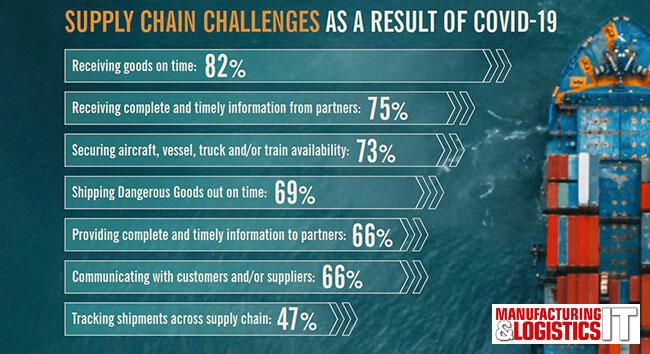Labelmaster, the provider of products, services and technology for the safe and compliant transport of dangerous goods (DG) and hazardous materials (hazmat), has announced the results of its fifth annual 2020 Global Dangerous Goods Confidence Outlook.

Sponsored by Labelmaster, International Air Transport Association (IATA) and Hazardous Cargo Bulletin, the survey of 258 DG pros from around the world examined the impact of the COVID-19 pandemic on their organisations and the changes needed to their DG management operations moving forward. The survey found the need for better remote training capabilities, upgraded technology and more effective communication of data across the supply chain.
“The COVID-19 pandemic has greatly impacted the global dangerous goods supply chain,” said Robert Finn, vice president, Labelmaster. “Yet even as the industry has shown tremendous resilience, this crisis has shed light on weaknesses related to DG organizations’ ability to keep shipments safe and compliant, and the need for further investment in DG training, technology and infrastructure.”
Key Findings from the Report
The survey (conducted between June 1 and June 19, 2020) found that DG organisations experienced a range of challenges as a result of the pandemic – both in keeping goods moving, as well keeping teams up-to-date and trained on new and existing compliance rules. According to the survey:
- The top supply chain management challenges were receiving goods on time (82%), receiving complete and timely information from partners (75%) and lack of carrier availability (73%)
- The top challenges directly related to DG management were re-certification of employees (69%), training employees on regulations (68%) and changes in rules related to the pandemic (57%)
- As organisations hurried to respond to rapid, large-scale changes, DG pros were generally pleased with the support received from their organizations, product suppliers and IATA, but not carriers or state authorities.
- 88% of IATA DGR users said it helped them during the pandemic
- 25% of respondents claimed their state/country’s competent authority was not helpful
- 23% claimed private carriers were not helpful

The ‘New Normal’ for the DG Supply Chain
Just as the pandemic impacted companies in different ways, the time needed to recover will vary as well. Yet, at the time the survey was conducted, a large number of respondents felt their DG operations would return to some degree of normalcy this year:
- Already back to normal (19%), by September (15%), by December (20%), 2021 and beyond (42%), never return to normal (4%)
But working towards a state of normalcy does not necessarily mean business as usual, and will likely result in a ‘new normal’. Given the supply chain challenges spotlighted during the pandemic, it’s clear to DG pros that their organisations must address gaps – specifically those related to data accuracy and completeness, as well as more effective tools for training team members remotely.
- 88% of respondents said “accurate and complete DG shipment data” is important to the future of their organisation, while 74% said that about ‘more effective remote DG training’
- But getting the resources they need may be a challenge. While a quarter of respondents believe that their companies are likely to spend more on DG management as a result of the pandemic, 59% said the investment will stay the same, and 7% expect it to decrease
Finn added, “The COVID-19 pandemic has shone a spotlight on areas of DG management that must be addressed within many organizations. As they look to move forward in the ‘new normal,’ it is important for senior leadership to recognise the critical role that DG management plays in maintaining a smooth, resilient and compliant supply chain, and that it can actually be a competitive advantage that drives revenue, reduces risk and enables better customer service. Then they must invest in the technology, training and infrastructure that DG pros need to manage DG effectively and efficiently.”

Add a Comment
No messages on this article yet